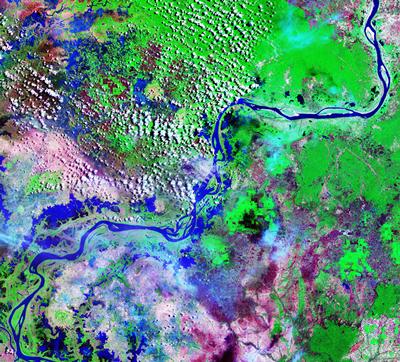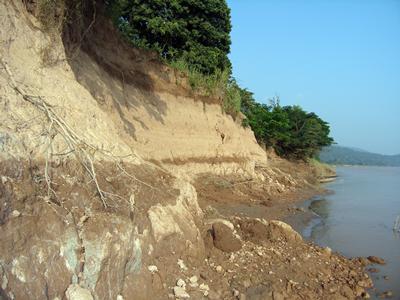Southampton Team win NERC Funding for STELAR Project

Researchers in the Earth Surface Dynamics (ESD) research group in Geography and Environment have secured NERC funding for a major new project that will investigate how monsoon floods affect the movement of sediment through one of the world’s largest rivers, the Mekong.
The ‘STELAR-S2S’ (Sediment Transfer and Erosion on Large Alluvial Rivers: Source to Sink) is a multi-institution and multi-national collaboration led by project principal Professor Steve Darby and co-investigator Dr Julian Leyland. Steve and Julian will work closely with researchers at the Universities of Exeter and Hull in the UK, the Universities of Washington, Illinois, the Office of Naval Research and Stroud Water Center in the United States, Aalto University in Finland, Royal University of Phnom Penh in Cambodia, the Southern Institute of Water Resources Research in Vietnam, and WWF-Greater Mekong, with total support for the project exceeding £1 million.
The aim of the project is to determine the factors that control the movement of sediment through the ‘transfer’ reaches of large rivers to their deltas and receiving basins downstream. The team will focus on identifying how different types of flood control the extent to which ‘autogenic’ morphological processes such as river bank erosion and overbank sedimentation either remobilise from, or store sediments on, the massive floodplains that characterise the world’s great rivers, using the Mekong as the main field site. Prior studies of large river sediment dynamics have only been able to resolve these key morphological processes at temporal resolutions of a few years at best, but using innovative numerical models that will be developed and tested in this work, the team will for the very first time be able to predict all the relevant sediment fluxes contributing to fluvial sediment budgets at much higher temporal resolution, such as seasonal or annual intervals.
Professor Darby explains, “Our models will estimate all components of the Mekong’s sediment budget, over multi-decadal time periods and at much shorter time intervals than has previously been possible. These unique datasets will, for the first time, enable our team to relate the movement of sediment to climatic fluctuations related to variations in monsoon intensity associated with phenomena such as the Indian Ocean Dipole and El Niño Southern Oscillation."
The project comes at an opportune moment in the Mekong River’s history. The Mekong delta is one of the world’s most populous and vulnerable deltas, with the IPCC estimating that over 1 million inhabitants could be displaced by sea-level rise by 2050. As Professor Darby puts it, “Understanding how climate change, along with the potential impacts of planned hydropower dams, will affect the volume of fluvial sediment reaching the delta is vital for making accurate predictions about whether or not deposition on the delta surface can outpace anticipated sea-level rise - or whether large portions of the delta will be drowned. Our work will offer new tools and predictions that will help regional agencies combat this threat.”
